The stiffest competition for VW’s Tiguan may be . . . another VW. That one being the one VW introduced last year as the newest VW.
The Taos.
It is smaller than the Tiggy – by about ten inches in length. But it has almost the same inches – in terms of first and second-row legroom. It’s also got about the same total space – for cargo.
And it costs about $3k less to start.
But it doesn’t offer a third row – which comes standard in the Tiggy. That (plus a stronger standard engine) may make the latter worth the price for those who need the additional seats – and want the extra power.
You also get some other things that either cost extra in the Taos or aren’t available in that model.
What It Is
The Tiguan is VW’s compact-sized crossover – as distinct from the subcompact Taos, which slots in underneath it in size as well as price.
And seats.
It is longer, as described above – and comes standard with seven passenger seating, which can be skipped in favor of a five-passenger/two-row layout that expands the space for cargo behind the second row to 37.5 cubic feet – about ten more cubic feet of cargo space than behind the second row in the Taos.
It also comes standard with a six speaker stereo, heated front seats, keyless ignition and a digital main instrument cluster, equipment that’s available but extra-cost in the Taos. 
Some available Tiggy features – including voice-controlled Climatronic AC (and heat) aren’t available in the Taos.
It also the only compact crossover in the segment that’s related to German luxury-brand crossovers (i.e., Audis)
Well, other than the Taos.
Prices start at $26,490 for the front-wheel-drive S trim; VW’s 4Motion all-wheel-drive system can be added as a stand-alone upgrade, raising the MSRP to $27,990. 
There are also SE, SE R-LIne Black and top-of-the-line SEL R-Line trims, the latter coming standard with VW’s 4-Motion AWD, a 20-inch wheel/tire package, a larger 10.25 inch Digital Cockpit instrument cluster, power folding outside rearview mirrors, adaptive LED headlights that turn with the steering wheel and a premium Fender audio system.
It stickers for $37,320.
For in-house cross-shopping purposes, the Taos stickers for $23,495 to start ($25,540 with AWD) and tops out at $33,645 for the SEL with AWD and a similar roster of features and amenities as in the Tiggy SEL R-Line. 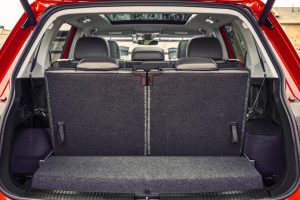
There are only two other same-size crossovers that have a third row. These are the Kia Sorento – which stickers for $29,590 to start – and the Mitsubishi Outlander – which stickers for $26,495.
However, these rivals come only with a third row. The Tiggy gives you the option to forgo that row, if you don’t need the extra seats – but want the extra space.
What’s New For 2022
The Tiggy gets a few minor styling tweaks and new tech, including the voice-activated Climatronic system described above and an available 30 color ambient interior lighting system. 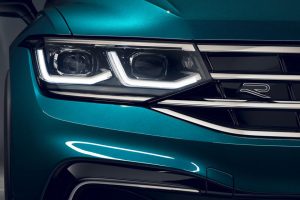
What’s Good
Two – or three – rows of seats put the Tiggy in a class by itself.
Enough power to pull a small (1,500 lb.) trailer.
Much more cargo room than Taos behind its second row.
What’s Not So Good
Not much room behind its third row (12 cubic feet).
No optional engine.
The Sorento and Outlander are both rated to pull a heavier (2,000 lb.) trailer.
Every Tiggy trim comes with the same engine – a turbocharged 2.0 liter four that makes 184 horsepower. It splits the difference between the 2.5 liter, 191 horsepower engine that’s standard in the Kia Sorento and the 2.5 liter, 181 horsepower engine that’s standard in the Mitsubishi Outlander.
But the VW’s engine has the advantage when it comes to torque, courtesy of the fact that it is turbocharged while its rivals’ engines aren’t. Which is why its smaller-than-theirs engine develops 221 ft.-lbs. at 1,900 RPM vs. just 181 ft.-lbs. at 3,600 RPM for the Outlander’s four and the same 181 ft.-lbs. – but not until 4,000 RPM – for the Sorento’s four. What that means is that while these engines make about the same power, the VW’s feels stronger, sooner – because of the additional torque. Which leverages the available power. In plainer language, the VW’s engine doesn’t have to rev as much to get the Tiggy going. The turbo makes its smaller four feel bigger than the actually larger-displacement engines that power its primary rivals. 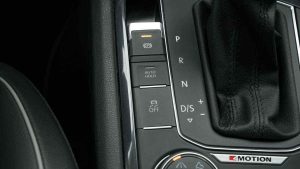
Indeed, even the Tiggy’s littler (and littler-engined) sibling, the Taos – feels bigger-engined than they are, because it’s also turbo-boosted. The Taos only has 1.5 liters of engine – but it makes 184 ft.-lbs. of torque, which is exactly the same as made by the much larger 2.5 liter engines that come standard in the Outlander and Sorento.
However, the Tiggy is only rated to pull 1,500 lbs. – vs. 2,000 lbs. for both the Sorento and the Outlander (the Taos isn’t rated by VW to tow anything).
This is down from what the Tiggy used to be rated to tow – which was 2,200 lbs.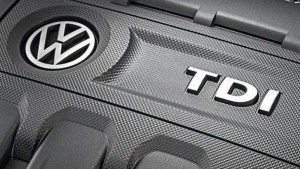
What’s slightly odd about the Tiggy’s lower-than-its-rivals maximum rated towing capacity is that it doesn’t come standard with a CVT (continuously variable) automatic transmission while at least one of its two rivals – the Outlander – does. Usually, you get a lower maximum tow rating with a CVT transmission – because CVTs (historically) haven’t held up as well when subjected to heavier-duty use, such as pulling a trailer.
Even a small one.
The Tiggy has both a torquier engine than its same-sized rivals and a usually-sturdier conventional (hydraulic/geared) eight speed automatic transmission (FWD models; Tiggys equipped with the optional AWD system come with a seven speed dual-clutch automatic). Either way, the Tiggy ought to be able to safely handle pulling at least as much as the Outlander and Sorento. And maybe it can. Probably, it can. But because it’s not rated to, if you do – and it breaks – then the warranty won’t cover the damage.
But perhaps the thing that’s missing most is the diesel engine you used to be able to get in a Tiggy – and the manual transmission VW used to offer with this model. The former gave even more torque – and better mileage – while the latter made it more fun.
It’s unfortunate the government has effectively outlawed both.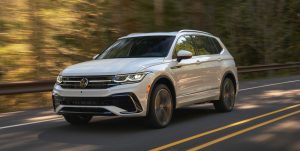
On The Road
As per above, the chief thing the Tiggy has going for it relative to its same-sized rivals is the extra low-end punch of its turbocharged engine. It isn’t much quicker, by the numbers, than the Sorento or the Outlander – taking about 8.9 seconds to get to 60 vs. about 9.2 for the Sorento and about the same for the Sorento. But – again – it feels quicker because the power comes on sooner.
This is most noticeable in stop-and-go traffic and when you need a shot of right-now power to take advantage of an opening in slow-moving traffic. In the VW’s rivals, you need to floor it to move it. In the VW, you don’t. This also helps you use less gas – no small thing these days.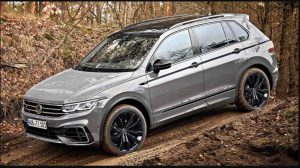
There is also something to be said for the non-CVT transmissions in this rig – even if VW doesn’t want to rate this thing to pull as much as its CVT-equipped rivals. It feels more natural to shift up through gears (even if you aren’t doing any shifting, yourself) than to move through ranges, as CVTs do – though some may prefer the “shiftless” character of CVTs.
But then why do so many CVTs emulate the shifting characteristics of geared automatics?
They don’t actually shift, of course – not having gears to shift. But there are mimicking transitions or “steps” as the CVT moves through its ranges.
Well, the CVT will usually eke out a couple or three more MPGs, because it is always in the right range for any given driving condition, in terms of making the most efficient use of the engine’s available power. This is why the CVT-equipped Outlander rates 24 city/31 highway – vs. 23 city/30 highway for the non-CVT Tiggy.
If that’s a difference that matters to you.
A more interesting difference, perhaps, is vis-a-vis the Kia Sorento – which doesn’t have a CVT but only manages 24 city/29 highway.
And you may be interested in another thing – that being the Tiggy’s sportier-than-most handling, which nicely complements its punchier-feeling engine. Though this little crossover would be much more interesting if it could still be had with a manual transmission.
But then, none of the others offer that anymore, either.
The Tiggy – uniquely – is the only small crossover that comes standard with three rows of seats and the option to dial that back to two rows. The advantage to these layouts is being able to go with the third row if you need the additional seats – at the cost of some room (for cargo).
Or forgo the row and gain a lot of room, for cargo.
The Kia Sorento and the Mitsu Outlander come standard with three tows of seats – but there’s no option to skip the third row, which means if you don’t need the additional passenger-carrying capacity it’ll cost you a lot of cargo-carrying capacity.
The three-row Tiggy has just 12 cubic feet of space for stuff behind its third row – which is about the same as the Sorento (12.6 cubic feet) and Outlander have (11.7 cubic feet). But the two-row Tiggy more than triples that, to 37.6 cubic feet.
Fold the second row down and that more than doubles, again – to 73.4 cubic feet.
That said, the upstart Taos has nearly as much space – 27.9 cubic feet behind its second row and 65.9 with its second row folded. But, of course, it does not offer a third row, much less come standard with one. And it doesn’t have some of the upper-crust features and amenities you’ll find in – or available in – its slightly bigger sibling, such as the new voice-activated Climatronic climate control, which lets you adjust the cabin temperature without actually touching anything. Just say, “Hello Volkswagen” and then “I’m hot.” The system takes care of the rest.
It’s things like that – and the Digital Cockpit that’s now standard in all trims – that gives the Tiggy a higher-end look and feel, which isn’t surprising given this VW is made by the same company that makes Audis.
The Rest
There’s very little this VW is missing – except what used to be available. Things like a manual transmission – and a diesel engine. These things really set the Tiggy apart from the crossover crowd. But it’s not VW’s fault they’re gone.
For that, you can thank the government.
The Bottom Line
If you’d like a third row, without more crossover, the Tiggy’s just one of three that has it. And it’s one of one that lets you skip that row, if it’s not something you need.
. . .
Got a question about cars, bikes or anything else? Click on the “ask Eric” link and send ’em in! Or email me directly at [email protected] if the @!** “ask Eric” button doesn’t work!
If you like what you’ve found here please consider supporting EPautos.
We depend on you to keep the wheels turning!
Our donate button is here.
If you prefer not to use PayPal, our mailing address is:
EPautos
721 Hummingbird Lane SE
Copper Hill, VA 24079
PS: Get an EPautos magnet or sticker or coaster in return for a $20 or more one-time donation or a $10 or more monthly recurring donation. (Please be sure to tell us you want a magnet or sticker or coaster – and also, provide an address, so we know where to mail the thing!)
My eBook about car buying (new and used) is also available for your favorite price – free! Click here. If that fails, email me at [email protected] and I will send you a copy directly!




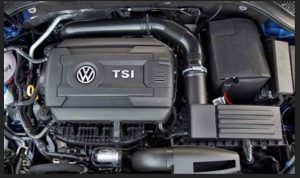










Not good for the winter! Just rented one and it sucks in the winter. The defroster doesn’t keep the windshield clear, no heated mirrors on the top trim (or too weak to notice), heated wheel is anemic, ice buildup in the wheels (much more so than other “modern” wheels), shape of the rear end collects snow much more than other SUV’s, side vents designed to clear the front passenger and driver windows are aimed so that they don’t clear the window. Nice car for summer but would never own again for winter. Buyer beware.
I seriously do not get the overlaps in this segment all manufacturers seemingly offering at least two models usually only distinguished by minute size and equipment-level differences.
Of course if it wasn’t for the government, these crossovers would be equipped with the right sized engine, which would be a naturally aspirated 3.0 V6 (with an optional diesel like Eric notes) and a real geared transmission. Now you have to take the chance that you pick the right one with the thing that doesn’t fail too quickly. Will it be the turbo or the CVT that craps out first?
Hi Rich,
Yup. I was thinking about just that the other day when I was out driving this rig. I got stuck behind a Clover who was following another Clover at a distance of 4-5 car lengths, doing well below the speed limit. An opportunity came to pass and so I made my move but the VW – lacking the motive power of the V6 it should have come with – struggled to get around both Clovers. I can recall when a vehicle in this class – such as a V6 RAV4 – could have executed a pass with margin to spare. But now it’s a close-run thing.
It makes me venerate my old truck all the more.
Does anyone else see the clown face in the picture of the steering wheel and dash board?
$37k vs $33.5k is enough of a difference to shove me to the lower bracket unless I really needed what the Tig offers. But what’s up with that puny tow rating?
Not sure what the Mitsu tops out at, but I do like the 10 year warranty. But oh, a CVT, no thanks.
If I am to have an automatic, make it an actual automatic with gears.